Portuguese Olive Oil PDO Regions
Portugal is the EU's fourth-largest olive oil producer, with six regions recognized under the Protected Designation of Origin (PDO) system. These regions ensure high-quality oils with unique flavors tied to their local environments. Here's a snapshot:
- Moura: Bold, fruity oils with bitter and spicy notes. Made from Cordovil, Verdeal, and Galega olives.
- Trás-os-Montes: Balanced oils with fresh fruit aromas and almond hints. Features Verdeal Transmontana, Cobrançosa, and Madural olives.
- Beira Interior: Medium-bodied oils with ripe and green fruity notes. Key olives include Galega Vulgar and Bical.
- Norte Alentejano: Smooth, fruity oils with a mild aroma. Uses Galega, Blanqueta, and local varieties like Azeiteira.
- Ribatejo: Sweet, golden-yellow oils primarily made from Galega Vulgar olives.
- Alentejo Interior: Sweet, fruity oils with mild apple and fig notes. Dominated by Galega Vulgar olives.
Each region combines unique soil, climate, and traditional methods to produce oils with distinct flavors. Whether bold, smooth, or sweet, these oils cater to a variety of culinary needs.
Quick Comparison
| PDO Region | Key Flavor Profile | Main Olive Varieties | Strengths | Limitations |
|---|---|---|---|---|
| Moura | Bold, fruity, bitter, spicy | Cordovil, Verdeal, Galega | Rich flavors, traditional methods | Strong taste, small production |
| Trás-os-Montes | Balanced, almond hints | Verdeal Transmontana, Cobrançosa, Madural | Versatile, rich in flavor | Weather impacts crop size |
| Beira Interior | Medium-bodied, fruity | Galega Vulgar, Bical | Mild, versatile | Less distinctive character |
| Norte Alentejano | Smooth, mild, fruity | Galega, Blanqueta, Azeiteira | Consistent quality | Milder taste, seasonal output |
| Ribatejo | Sweet, smooth | Galega Vulgar | Simple, reliable | Tough market competition |
| Alentejo Interior | Sweet, fruity, apple notes | Galega Vulgar, Cordovil | Clear ripe fruit taste | Weather-sensitive production |
Each region's oils reflect Portugal's rich olive-growing heritage, offering something for every taste and dish.
Related video from YouTube
1. Moura PDO Region Overview
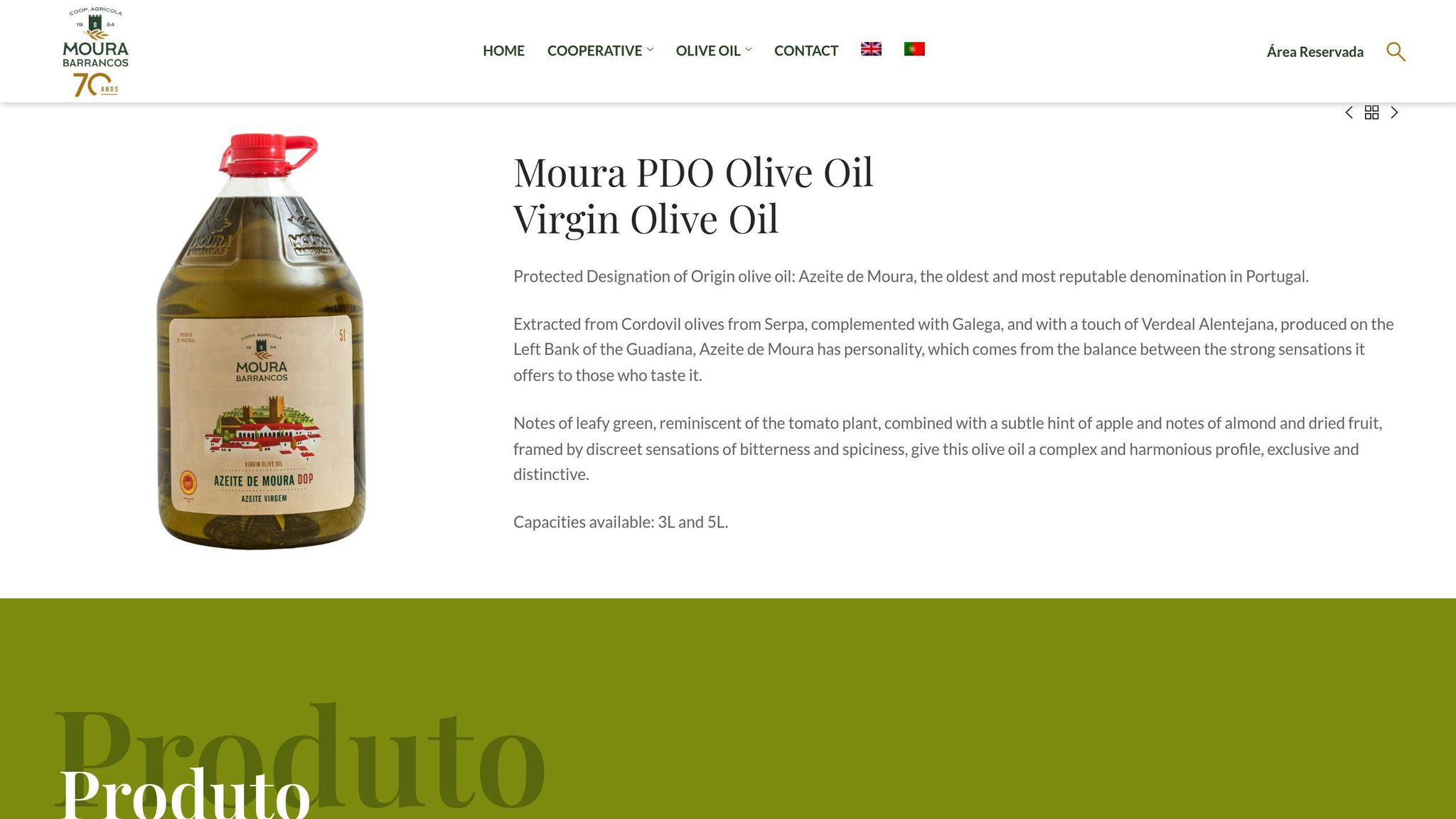
Moura stands out as one of Portugal's premier olive oil regions. Its oils pack a punch with bold flavors that you won't find anywhere else. Nestled in Portugal's prime olive-growing territory, Moura has earned its PDO status thanks to its special growing conditions and time-tested production methods.
The oils from this region hit you with an intense fruity smell right away. Take a taste, and you'll notice a perfect mix of bitter and spicy notes that set Moura oils apart from the crowd.
Three olive varieties make up Moura's signature blend:
- Cordovil: The star of the show
- Verdeal: Brings extra layers of flavor
- Galega: Adds that special Moura touch
What makes Moura's oils so special? It's all about location. The local climate and soil work together to create olives with specific flavor compounds. Mix that with old-world production methods and modern quality checks, and you've got something special.
The PDO rules aren't just red tape - they're the guardian of Moura's oil-making tradition. Every bottle must meet strict standards to earn that PDO label.
Want to make a dish pop? Reach for a Moura PDO oil. These bold, complex oils can transform your cooking. Next up, we'll explore what makes Trás-os-Montes PDO oils different.
2. Trás-os-Montes PDO Region Overview
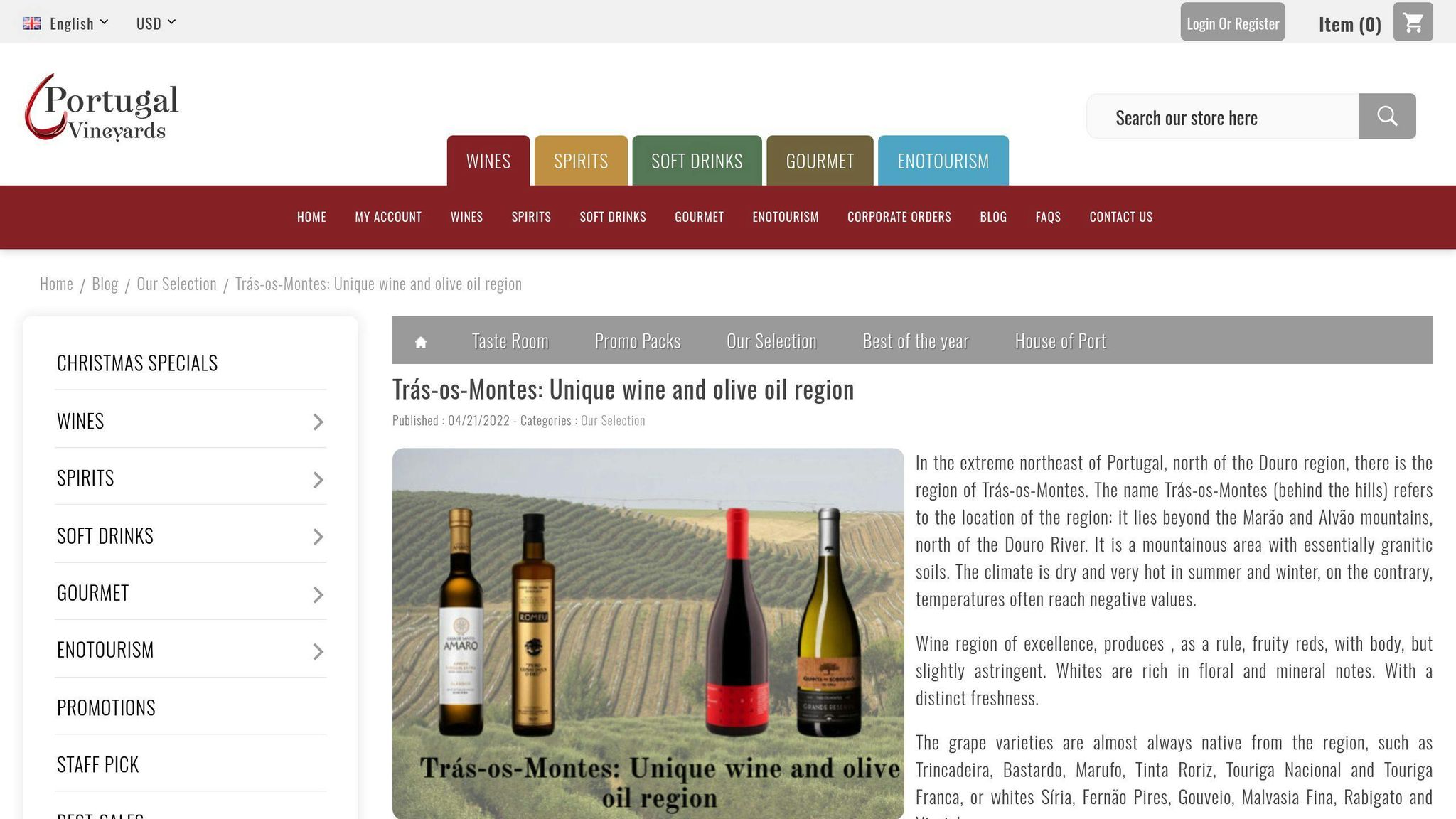
In northern Portugal, Trás-os-Montes produces olive oils that stand in sharp contrast to Moura's bold character. This PDO region includes several key municipalities: Mirandela, Vila Flor, and Alfândega da Fé.
The magic of Trás-os-Montes oils lies in their perfect balance. Each bottle brings a fresh fruit aroma that opens up into a rich taste experience. Picture a dance of flavors - sweet notes mingling with green, bitter, and spicy elements. Some oils even surprise you with gentle almond hints.
The region's schist soils play a big role in shaping these flavors. Combined with the local climate, these natural elements give the oils their distinctly northern Portuguese personality.
Five key olive varieties define Trás-os-Montes oils:
- Verdeal Transmontana brings layers of flavor
- Cobrançosa adds perfect balance
- Madural contributes fruit notes
- Cordovil offers its own special touch
- Santulhana plays a backup role
In the kitchen, these oils shine differently than their Moura cousins. They're super flexible - great for both cooking and finishing dishes. Think of them as your go-to choice when you want subtle, well-rounded flavors that won't overpower your food.
Moving south, you'll find Beira Interior, where the landscape and traditions create yet another unique chapter in Portugal's olive oil story.
3. Beira Interior PDO Region Overview
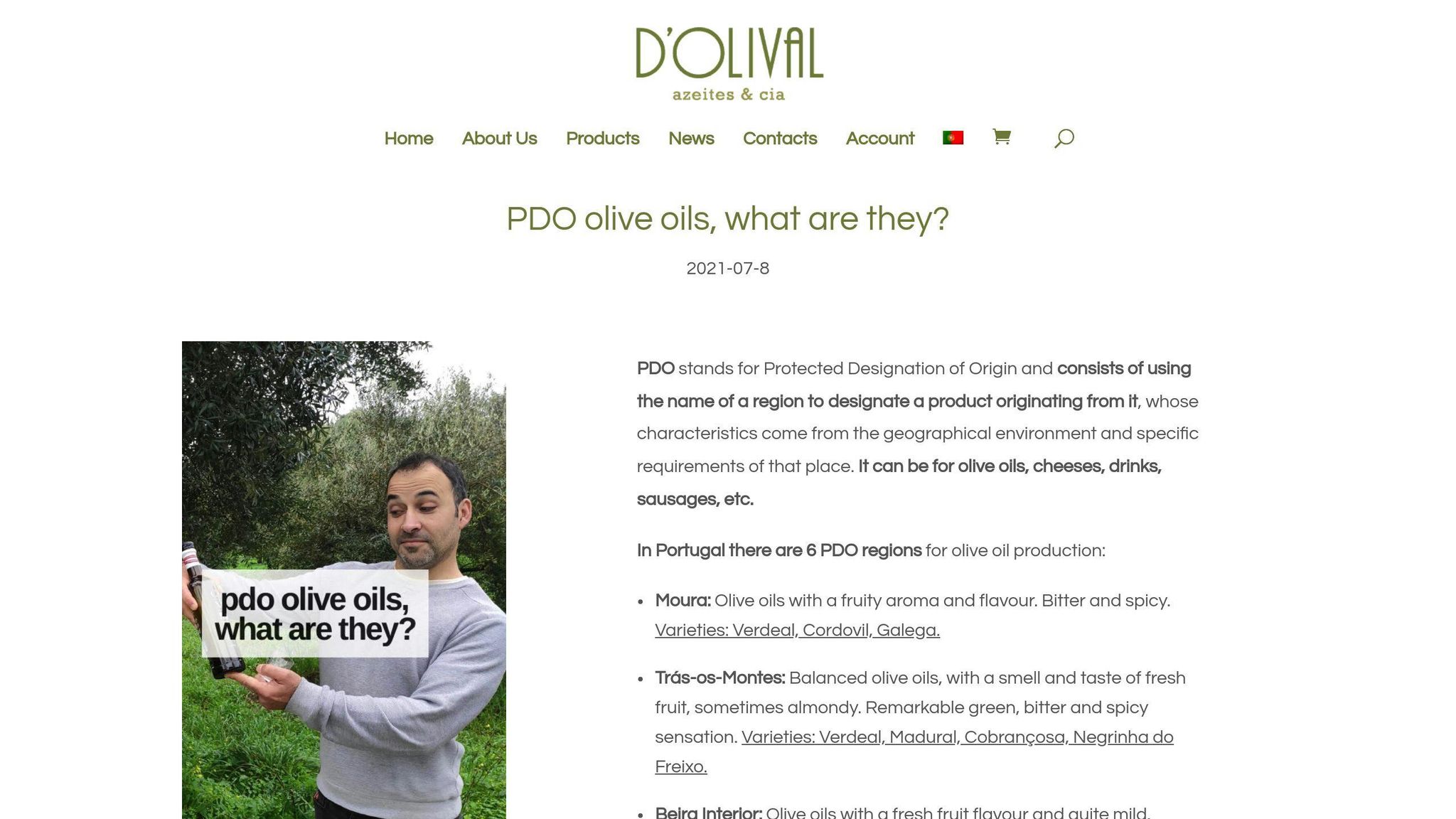
Sitting between northern and southern Portugal, the Beira Interior PDO region crafts olive oils that tell stories of their land. Split into Beira Alta and Beira Baixa areas, this region mixes old-world methods with modern quality standards to earn its PDO status.
Production and Geography
The region's soils, rich in calcium and potassium, create perfect conditions for growing olives. Six main olive varieties shape the oil's character:
- Galega Vulgar: Brings fruity notes
- Bical: Adds complex aromas
- Cordovil: Offers balanced bitterness
- Carrasquenha: Delivers pungent kicks
- Cobrançosa: Builds body
- Cornicabra: Adds depth and intensity
From picking olives to pressing oil, producers here blend time-tested methods with strict quality checks. This mix helps them make consistently good oil, batch after batch.
Flavor Profile
Want to taste something special? Beira Interior oils mix ripe and green fruity notes in ways that make chefs smile. They're like the Swiss Army knife of olive oils - great for cooking Portuguese classics or drizzling over modern dishes.
Think of these oils as the perfect middle ground between Portugal's north and south styles. They work just as well for cooking your food as they do for finishing it with a fancy flourish.
These oils capture what makes this area special - its soil, climate, and people's know-how. Head south, and you'll find the Norte Alentejano region, where the olive oil story takes another interesting turn.
4. Norte Alentejano PDO Region Overview
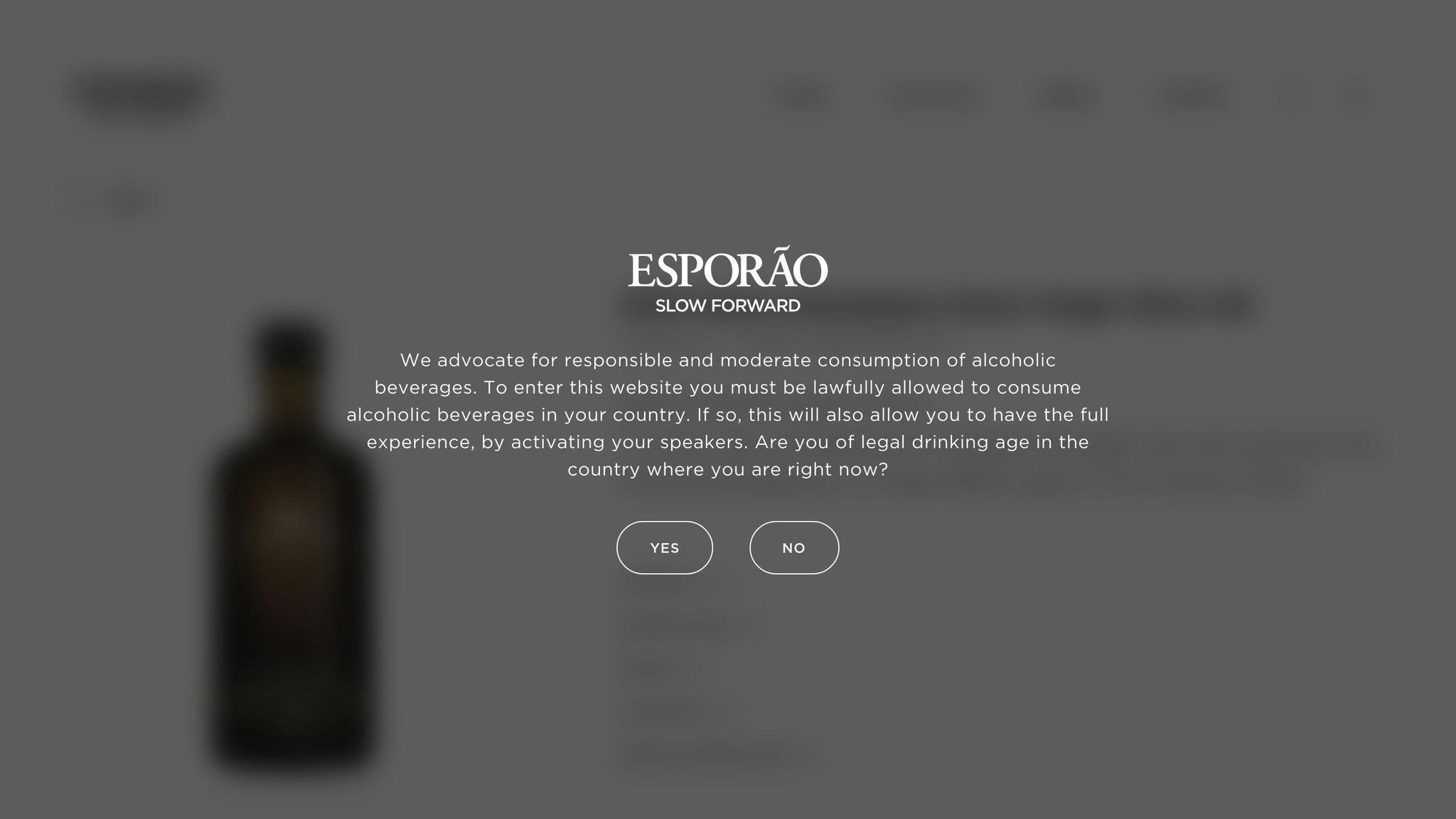
The Norte Alentejano PDO region shows off what makes Portuguese olive oil special. It's a place where tradition meets terroir to create oils that tell the story of their homeland.
Olive Varieties
The heart and soul of this region's oils come from its olive mix. The classic Galega brings smoothness, Blanqueta adds its gentle touch, and Cobrançosa kicks in with extra depth. But what makes these oils truly special are the local stars - Azeiteira and Carrasquenha - adding their own Portuguese flair to the blend.
Geographical Influence
Mother Nature really outdid herself here. The perfect mix of soil and weather creates a sweet spot for olive trees. It's like the trees know exactly where they belong, producing olives that make oils with a clear personality year after year.
Flavor Profile
If you're comparing Portuguese oils, Norte Alentejano stands out from the crowd. While Moura hits you with bold flavors and Trás-os-Montes plays it down the middle, Norte Alentejano oils take a different path. They're smooth operators with a fruity soul and a gentle aroma that plays nice with food instead of trying to steal the show.
As we head south, we'll discover how Ribatejo adds its own chapter to Portugal's olive oil story.
sbb-itb-4066b8e
5. Ribatejo PDO Region Overview
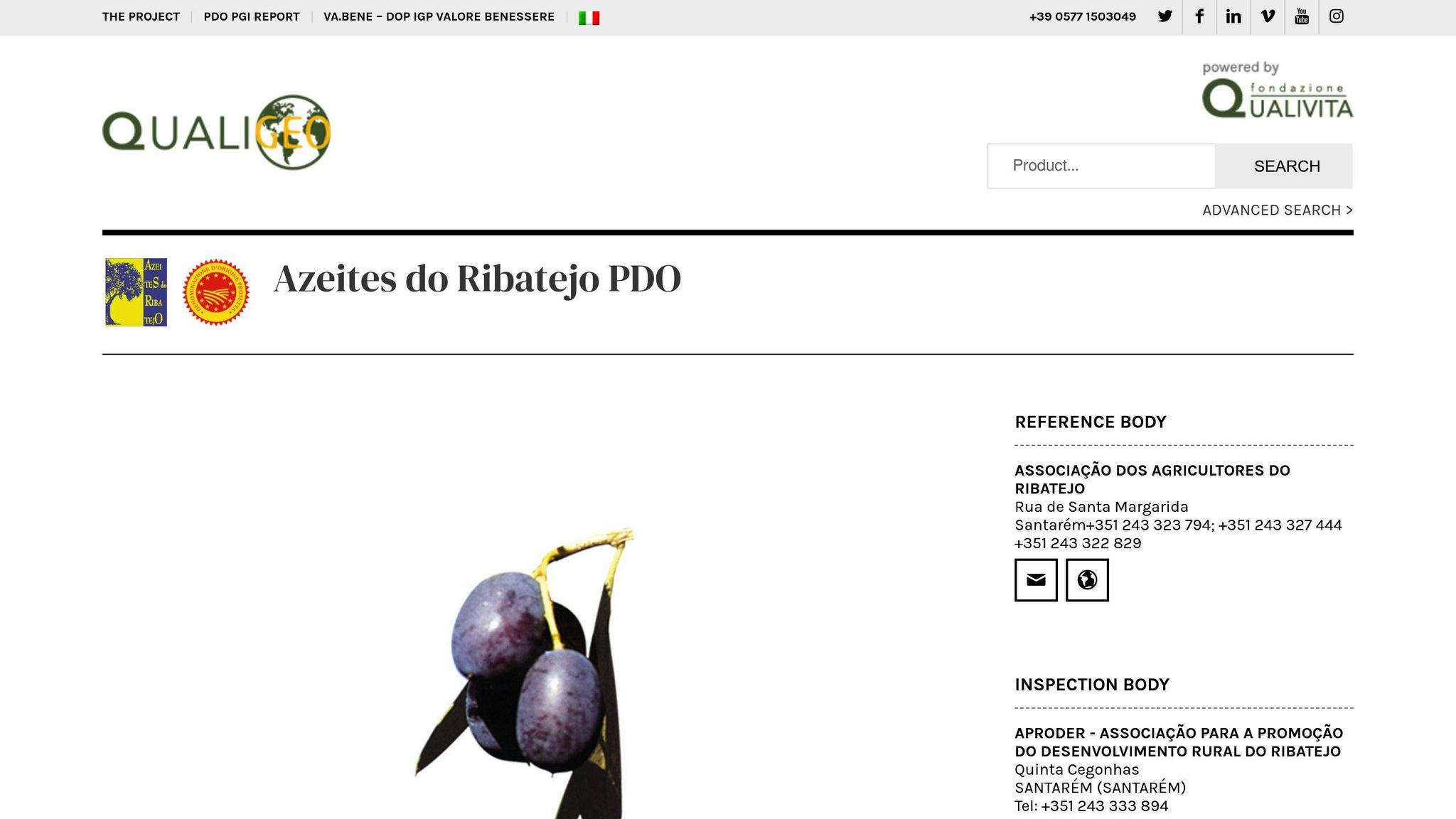
Ribatejo's olive oil tells a story of Portuguese tradition, where perfect growing conditions and expert craftsmanship come together to create oils known for their sweet, smooth character.
Olive Varieties
The Galega Vulgar olive stands as the star of Ribatejo's olive groves. While other regions mix and match different varieties, Ribatejo keeps it simple - this native olive type defines the PDO's character. It's a focused approach that pays off, giving their oils a consistent quality you can count on.
Geographical Influence and Production
Mother Nature seems to have designed Ribatejo specifically for olive growing. The local environment hits all the right notes for healthy olive trees and top-quality fruit. Mix this natural gift with strict PDO rules, and you've got one of Portugal's six standout olive oil regions.
Flavor Profile
Take one look at a Ribatejo olive oil, and you'll notice its golden yellow glow. Take one taste, and you'll understand what makes it special. While Moura brings bold flavors and Trás-os-Montes offers middle-ground intensity, Ribatejo oils glide across your palate with a sweet smoothness and rich feel.
These oils have helped put Portuguese olive oil on the world map, offering something different from their bolder cousins. Head south from here, and you'll find yourself in Alentejo Interior, where another chapter of Portugal's olive oil story unfolds with its own special character.
6. Alentejo Interior PDO Region Overview

The Alentejo Interior PDO region shows how Portugal's olive oil tradition meets modern production methods. The area's mix of soil, climate, and old-world knowledge helps create oils with a character all their own.
Olive Varieties
The star here is the Galega Vulgar olive - it makes up 60% or more of what's grown. Cordovil de Serpa and Cobrançosa olives add their magic too, filling out up to 40% of plantings. Old-school varieties can make up another 5%, giving these oils their special touch.
Terroir and Production
The soil here packs plenty of calcium and potassium - perfect for olive trees. Plus, the weather's just right. Producers follow strict PDO rules: they pick and press the olives quickly, while still using time-tested methods that have made this region famous.
Flavor Profile
Take a whiff of these oils and you'll catch a mild fruity scent - both fresh and ripe olives come through. Taste-wise, you'll notice gentle apple and fig notes that blend into something sweet and smooth. Look at the color and you'll see either a golden yellow or greenish shade - that's the local terroir showing its colors.
These oils tell the story of what makes Portuguese olive oil special, blending old wisdom with today's standards.
7. Big Horn Olive Oil Details

Big Horn Olive Oil matches the quality standards of Portuguese PDO regions through their quick harvest-to-press methods. Their process helps keep the oil fresh and packed with antioxidants, just like their Portuguese counterparts.
Production Methods
Speed is key at Big Horn Olive Oil - they cold-press their olives within 2 hours of picking them off the tree. This quick turnaround helps lock in the oil's natural antioxidants and keeps it super fresh, meeting the same high bar set by Portuguese PDO producers.
Flavor Profile
You'll find several options in their lineup, including their Estate Reserve Ultra Premium EVOO and single-source oils like Picual and Coratina. Each oil brings its own personality to the table, showing that great olive oil isn't just about where it comes from - it's about how it's made.
Geographical Influence
While Portuguese PDO regions get their special touch from local growing conditions, Big Horn Olive Oil takes a different route. They pick the best olive sources from around the world, letting them stick to Ultra Premium standards while offering different taste experiences.
"Our commitment to freshness and quality mirrors the high standards set by traditional olive oil producing regions", notes Mercedes Burkavage, co-founder of Big Horn Olive Oil, emphasizing their focus on maintaining international quality standards.
Strengths and Weaknesses
Portuguese PDO regions produce olive oils with distinct personalities, each shaped by their local environment and time-tested methods. Let's look at what makes each region special - and where they might fall short.
| PDO Region | Strengths | Limitations |
|---|---|---|
| Moura | - Bold, balanced flavors from olive mix - Time-tested production methods |
- Strong taste not for everyone - Small production area - Premium pricing due to PDO label |
| Trás-os-Montes | - Rich flavor with almond hints - Many olive types - Special mountain growing areas |
- Tough harvest conditions - Weather impacts crop size - Hard-to-reach growing spots |
| Beira Interior | - Easy-to-like mild taste - Olives grow well here - Nice mix of scents |
- Less standout character - Makes less oil - Yearly output changes |
| Norte Alentejano | - Smooth, even flavor - Uses classic Galega olives - Quality you can count on |
- Milder taste - Not well-known worldwide - Output varies by season |
| Ribatejo | - Sweet, fruity oils great for mixing - Good location for business |
- Simple taste - Small-scale production - Tough market competition |
| Alentejo Interior | - Clear ripe fruit taste - Old-school methods - Known in the market |
- Weather affects crops - Costs more to make - Few olive types |
Each region's character comes from its unique setting. Take Moura - its bold oils come from hot weather and special soil rich in minerals. Up in Trás-os-Montes, the mountain climate and temperature swings create oils with more layers of flavor.
"Portuguese PDO regions demonstrate how geographical and climatic conditions, combined with traditional knowledge, create oils with unique characteristics that meet specific regional standards", notes the Portuguese Olive Oil Council, highlighting the importance of protected designation of origin in maintaining quality standards.
For food lovers, this means lots of choices: from Moura's bold punch to Ribatejo's gentle sweetness. Each region brings something different to the table, giving cooks and food fans plenty of options for their kitchen adventures.
Closing Thoughts
Portugal stands as the EU's fourth-largest olive oil producer, with six PDO regions that each tell their own story through flavors and methods passed down through generations.
These regions paint a picture of Portugal's olive oil landscape - from the bold punch of Moura's oils to the smooth, sweet notes of Ribatejo. Meanwhile, Big Horn Olive Oil takes a different path, blending modern techniques with global market demands.
For both professional chefs and home cooks, knowing these regional differences helps make better choices in the kitchen. Portuguese olive oils are getting more attention worldwide, showing how well the PDO system works to keep each region's character intact.
"Portuguese PDO regions demonstrate the perfect balance between tradition and quality standards, offering oils that reflect their unique geographical origins while maintaining consistent excellence", notes the Portuguese Olive Oil Council, highlighting how protected designation of origin ensures authenticity in every bottle.
Each region's olive oils bring something special to the table. Whether you're cooking up a storm or just want to know what makes Portuguese olive oil different, these regional flavors tell the story of Portugal's olive-growing heritage.
FAQs
What are the olive oil regions in Portugal?
Portugal produces some of the world's best olive oils across six Protected Designation of Origin (PDO) regions. Each PDO stamp tells you exactly where your oil comes from and promises a specific taste and quality level.
Think of these regions like wine appellations - each one brings its own character to the bottle. Here's what makes each region special:
| PDO Region | What's in the Bottle |
|---|---|
| Moura | Bold, spicy oils packed with polyphenols |
| Trás-os-Montes | Clean, crisp oils shaped by the cool northern climate |
| Beira Interior | Medium-bodied oils with subtle fruit notes |
| Norte Alentejano | Rich, complex oils with layered flavors |
| Ribatejo | Smooth, sweet-tasting oils from central Portugal |
| Alentejo Interior | Sweet, fruity oils made mostly from Galega Vulgar olives |
"PDO ensures each region's oils meet strict quality and authenticity standards", notes the Portuguese Olive Oil Council, emphasizing how geographical distinctions influence flavor profiles.
Take Alentejo Interior, for example. They MUST use mostly Galega Vulgar olives - it's not just tradition, it's the law. This strict rule is why you can count on getting that same great taste bottle after bottle.
Each region's unique climate, soil, and olive varieties come together to create oils that tell the story of their homeland. Whether you're cooking or drizzling, there's a Portuguese PDO oil that'll match what you're looking for.

